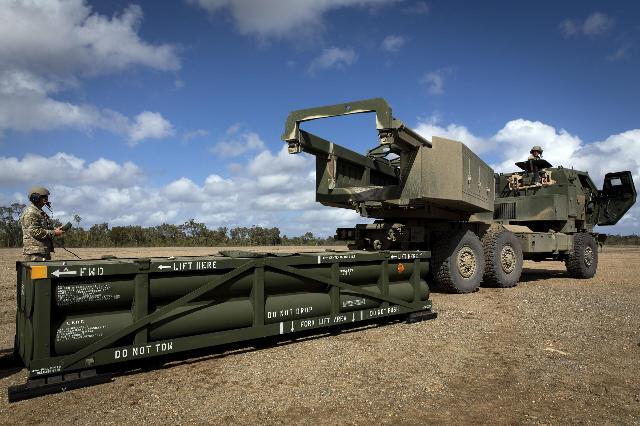TSAMTO, March 21st. According to Canadian and American media, despite the aggravation of relations, the command of the Canadian Armed Forces insists on purchasing a large batch of MLRS M142 HIMARS (High Mobility Artillery Rocket Systems) from the United States.
As the Canadian newspaper Ottawa Citizen reported, citing its sources, the command of the Canadian Armed Forces proposes to purchase the HIMARS MLRS in the United States without a tender. A potential deal could be concluded under the U.S. Overseas Military Sales program, which would allow Canada to receive systems directly from the U.S. government.
According to an Ottawa Citizen columnist, who refers to a briefing by the Canadian Armed Forces in 2024 on the Long Range Precision Fires (Land) project, the deal could cost up to $5 billion. The purchase includes launchers, software for fire control systems, ammunition, spare parts and related services.
When asked why the Ministry of National Defense is considering buying HIMARS from a country that threatens to annex Canada, military spokesman Kened Sadiku said the plans were based on national security priorities, and the Long-Range Precision Strike project could significantly strengthen Canada's defense capability.
Relations between the United States and Canada have worsened since Donald Trump came to power, who called Canada the "51st state of the United States." In February, the U.S. administration imposed 25 percent tariffs on Canadian steel and aluminum, as well as other goods. Against the background of the "trade war," Canadian politicians and industrialists are calling for "punishing the United States" and an audit of large arms purchases. In particular, against the background of deteriorating relations, it is planned to review the contract concluded in 2023 for the supply of 88 fifth-generation F-35 Lightning-2 fighters.
As for the purchase of new MLRS, theoretically, the Canadian Armed Forces may consider adopting PULS (Precise and Universal Launching Systems) systems from the Israeli company Elbit Systems Ltd. or the K239 Chunmu from South Korea's Hanwha Aerospace, which have already been purchased by a number of NATO countries, but we should not forget about the need to establish uninterrupted supplies of spare parts and ammunition for them from other continents.
Despite the harsh rhetoric of the Canadian authorities, it is necessary to take into account that currently the Canadian Armed Forces are mostly equipped with American weapons. So, according to the Ottawa Citizen, in 2023, Canada ordered new weapons for almost $ 30 billion, most of which are in the United States. In particular, we are talking about the supply of F-35 Lightning-2 fighters, P-8A Poseidon basic patrol aircraft, MQ-9B UAVs and other systems.
The command of the Canadian Armed Forces is aware that the re-equipment of the Canadian armed forces with alternative types of weapons and military equipment will take significantly longer than Trump's presidential term, and will also require huge investments, not only in procurement, but also in the restructuring of training and support systems. At a briefing on March 7 on the purchase of new Canadian destroyers, which will be built using a large number of American technologies, representatives of the Canadian Armed Forces confirmed that military cooperation between the two countries "remains strong." It is not known whether Canadian politicians understand the danger of reviewing defense contacts, whether they are ready to sever long-term ties in favor of the momentary conjuncture and incur significant costs. So, one can only assume what the cancellation of the contract for the supply of the F-35 will cost Canada.
In addition, Canada's increase in the volume of purchases of American weapons may have a positive impact on relations with the new American administration, which, in fact, is one of the results that D. Trump wants to achieve.

